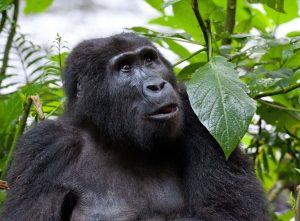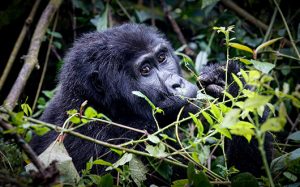ARE THERE MOUNTAIN GORILLAS IN ZOOS.
The allure of mountain gorillas lies in their natural habitats, thriving amidst the lush landscapes of Bwindi Impenetrable Forest and Volcanoes National Park. As you plan your journey with Abunda Discoveries Uganda, you may wonder about the presence of mountain gorillas in zoos. In this guide, we delve into the topic, exploring the unique considerations and ethical dimensions associated with gorillas in captivity.
Wild Versus Captive Environments:
Mountain gorillas, classified as critically endangered, are primarily found in the wild. Their natural habitats in Uganda and Rwanda provide the ideal conditions for their complex social structures, natural behaviors, and overall well-being. The dynamic and intricate ecosystems of Bwindi Impenetrable Forest and Volcanoes National Park are crucial for their survival.
Conservation and Ecotourism:
The focus of conservation efforts has been on protecting mountain gorilla populations in their native habitats. Ecotourism initiatives, such as gorilla trekking, contribute to local economies and fund conservation programs, ensuring the long-term survival of these endangered species. The revenue generated supports habitat preservation, anti-poaching measures, and community development.
Challenges of Captivity:
Captive environments, such as zoos, pose unique challenges for mountain gorillas. The complex social structures that are integral to their well-being may be disrupted in captivity. The limited space and artificial settings can impact their physical and psychological health, potentially leading to stress and behavioral issues.
Global Efforts for Conservation:
Zoos and wildlife organizations around the world are increasingly prioritizing conservation and education. Rather than keeping mountain gorillas in captivity, these institutions focus on supporting conservation initiatives in their native habitats. This approach aligns with the broader global commitment to preserving biodiversity and protecting endangered species.
Education and Awareness:
Zoos play a vital role in educating the public about wildlife conservation. Many zoos feature educational programs and exhibits that highlight the importance of protecting endangered species and their natural habitats. These initiatives aim to raise awareness and foster a sense of responsibility for the well-being of animals in the wild.
Research and Collaborations:
Zoos often engage in research collaborations with field conservationists and scientists. The knowledge gained from studying captive animals contributes to a deeper understanding of species-specific needs and behaviors. This information can inform conservation strategies both in captivity and in the wild.
Conclusion:
While mountain gorillas captivate our imaginations, their true essence is experienced in the untouched wilderness of Bwindi Impenetrable Forest and Volcanoes National Park. Abunda Discoveries Uganda encourages travelers to partake in responsible and sustainable gorilla trekking experiences that contribute to the conservation of these magnificent creatures in their natural habitats. By supporting ecotourism initiatives, we collectively ensure the continued existence of mountain gorillas and the preservation of the ecosystems they call home.




